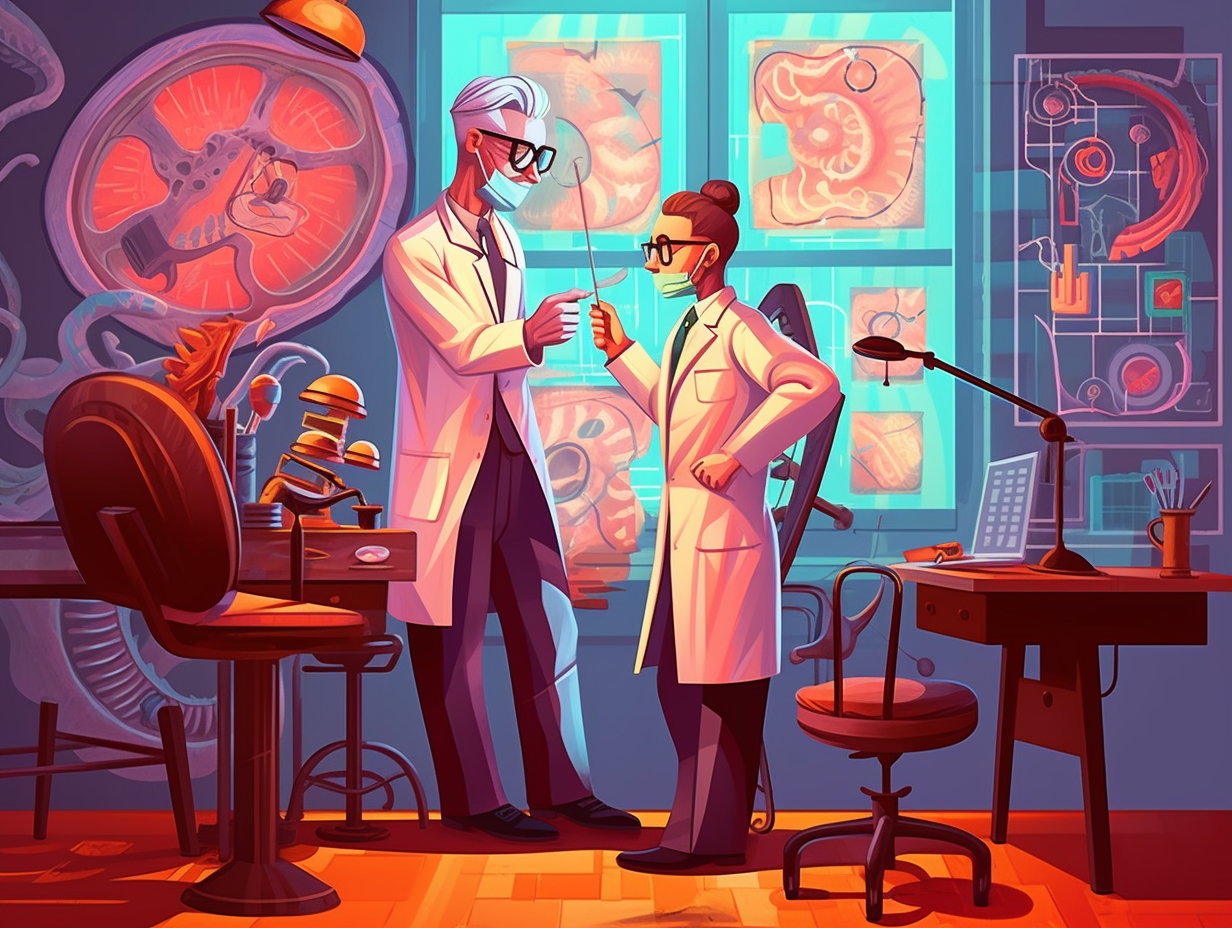Discover the Wonders of Science: 13 Fascinating Biomedical Engineering Facts You Need to Know!

1. Dr. Frankenstein Meets Engineer McBeammaster
When Dr. Frankenstein met Engineer McBeammaster, a beautiful mess was born: Biomedical engineering merges various engineering disciplines with modern biology to create marvelous innovations like implantable medical devices, orthopedic implants, and tissue engineering, opening a Pandora's box of endless possibilities.
Source => mtu.edu
2. Kidneys' Airbnb: Thanks, Willem Kolff!
If kidneys had an Airbnb option, they'd owe Willem Kolff some serious royalties: The man dubbed "The Father of Artificial Organs" not only upgraded the renal rental scene, but also dabbled in artificial lungs and hearts. Kolff's WWII-era invention, the "rotating drum kidney" (RDK), kickstarted a whole new era in nephrology and cardiology – even though his artificial heart prototype never made it into a human chest, he broke barriers and revolutionized the world of biomedical engineering.
Source => case.edu

Did you know babies with bionic ears can develop language skills just like their peers? Discover the amazing impact of cochlear implants on children's lives!
=> Fun Facts about Cochlear-Implants
3. Love Language in Taiwan: Biomedical Engineering
If you think love is the universal language, hold my stethoscope: biomedical engineering is a rapidly growing field in Taiwan, where numerous universities offer specialized programs and internships to equip students for thriving careers in medical device manufacturing, long-term care organizations, and healthcare sales and services, all while the Taiwanese Society of Biomedical Engineering provides ongoing learning opportunities for professionals in the field.
Source => science.gov
4. From Captain Hook to Tony Stark: Prosthetic Revolution
Say goodbye to Captain Hook and hello to Tony Stark: Biomedical engineers have stepped up the prosthetic limb game by developing affordable and less-invasive prosthetic limbs that can be controlled by the user's thoughts, such as a high school senior in Virginia who built a non-invasive robotic arm for a mere $300 using engineering-grade materials and artificial intelligence to interpret EEG data collected via electrodes on the user's earlobe and forehead. This innovative breakthrough is set to make a world of difference for the 2 million people in the US living with limb loss, showing the marvel-ous world of biomedical engineering.
Source => smithsonianmag.com

5. Cancer-fighting Gold: Tiny But Mighty Nanoparticles
Who needs a pot of gold when you can have cancer-fighting nanoparticles? These tiny treasures are giving cancer cells the ultimate heat-up treatment: Biomedical engineers use near-infrared lasers to heat up gold nanoparticles, selectively targeting and killing cancer cells without harming the healthy ones, all while potentially aiding in imaging and genetic material delivery.
Source => ncbi.nlm.nih.gov
6. Organs at the Body Shop: Biogenerative Engineering
Transfer me to the body shop: scientists are making strides in the burgeoning field of biogenerative engineering with technologies like 3D bioprinting and decellularization, enabling them to regenerate and create new tissues and organs for patients suffering from organ failure disorders. Who needs a mechanic when you've got cutting-edge, lab-grown livers and tracheas lined up for transplant?
Source => ncbi.nlm.nih.gov
7. Meet Six Million Dollar Man's Robotic Buddy
Say hello to the Six Million Dollar Man's consulting team: biomedical engineers specialize in a fascinating subfield called Biomedical Robotics. Here, they create and improve medical robotic marvels like a superhuman Edna Mode-meets-Tony Stark hybrid, combining their mechanical, electrical, and biomedical prowess with a dash of materials science and interactive computing: Collabs with clinical partners like Emory and CHOA make applications possible in various areas, such as designing wearable gadgets for job training and injury prevention, neurointegrated prosthetic wizardry, and commanding image-guided surgical interventions. Bionic learning curve not included.
Source => bme.gatech.edu
8. Brain-Controlled Limbs & Phantom Tingles
Who needs coffee when you can have brain-controlled limbs and phantom tingles?: Biomedical engineering breakthroughs are enabling amputees to operate prosthetic limbs using only their thoughts, while also regaining a sense of touch through sensors that connect back to the nerves in the arm, providing a stimulating, tingle-like sensation from the future!
Source => cbsnews.com
9. Bladders 2.0: Tissue Engineering to the Rescue
When you feel like your bladder is going to burst and science swoops in to save the day: Biomedical engineering has led to tissue engineering, a field that uses a mix of patient cells and biodegradable materials to create bio-engineered organs like urinary bladders. Although still in development, this innovation could eventually help combat the global organ shortage by replacing or regenerating damaged tissues and organs.
Source => ncbi.nlm.nih.gov

10. Bone Reconstruction: Skeletons' Best Friend
Breaking bones without a hitch: that's what biomedical engineers are cooking up as they concoct recipes for rebuilding skeletons one custom graft at a time! On a more serious note: they're developing advanced biomaterials and tissue engineering techniques to create personalized bone grafts and substitutes that enhance healing and repair for patients, transforming orthopedic surgery and filling in the gaps for critical-size bone defects.
Source => ncbi.nlm.nih.gov
11. Frankenstein Meets Biomaterials: The Ultimate Elixir
What do chitosan, hyaluronic acid, and a mad scientist's shopping list have in common? They all lay the foundation for the Frankenstein-esque world of biomedical engineering: a realm where natural and synthetic biomaterials like collagen, polyethylene glycol, and polylactic acid are mixed and matched to create artificial tissues that promote nerve repair, ease inflammation, and help the spinal cords of injured lab rats party like it's 1999 after they've been injected with these bionic elixirs.
Source => ncbi.nlm.nih.gov
12. LensMaster Extraordinaire: Ultrathin Biosensors
Eye see what you did there, tenaciously vying for the title of LensMaster Extraordinaire: Biomedical engineers are crafting ultrathin, stretchable biosensors on soft contact lenses that enable painless diagnosis and early detection of eye health issues like glaucoma, without the need for anesthesia, all while improving user comfort and diagnosis accuracy.
Source => visionmonday.com
13. Mosquito-Busters: Bioengineering vs. Bloodsuckers
When life gives you mosquitoes, you make remedies: Bioengineering is fighting the good fight against pesky bloodsuckers and diseases like malaria, Zika, Yellow Fever, and Chikungunya, using a variety of innovative methods and technologies.
Source => engineeringonline.ucr.edu
Related Fun Facts




















